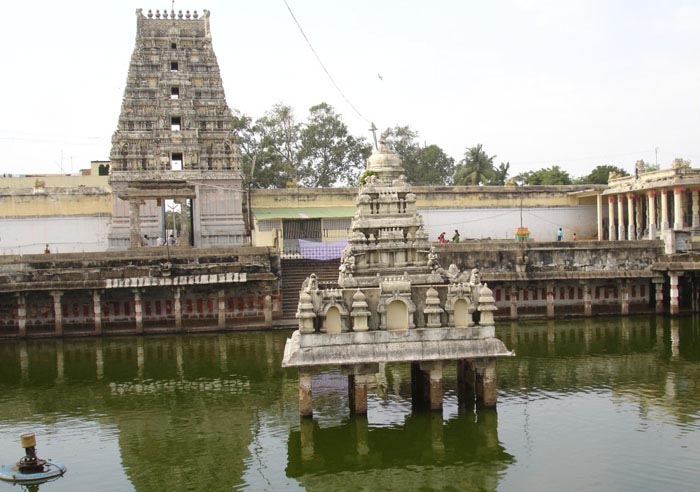Kamakshi Amman Temple

Information of Kamakshi Amman Temple, Kanchipuram, Tamil Nadu
The Kamakshi temple is quite a popular Hindu shrine devoted to Kamakshi who is supposed to be an embodiment of the revered goddess Parvati. The temple is situated in the Kanchipuram city in the state of Tamil Nadu and is believed to be quite rich in history. The temple is also strongly related to Sankaracharya who is acknowledged to be one of the famous Hindu gurus.
Kamakshi Amman Temple Religious Significance
The Akilandeswari temple located in Thiruvanaikaval and the Meenakshi temple at Madurai together with the Kamakshi temple are identified to be the imperative worshipping hubs of Parvati in the form of mother goddess in the entire Tamil Nadu state. The chief deity that is Kamakshi, is observed to be in a regal seating position known as Padmasana in preference to an usual form of standing position. The seated position that is Padmasana actually refers to a particular posture of yoga depicting affluence and peace. The goddess here can be seen to be gripping onto a bow of sugarcane along with a bouquet of flowers with the lower hands and holds a pasha or lasso and a goad or ankusha with her upper hands. An interesting aspect about the temple which adds to its significance is the fact that the Kamakshi Amman temple is the only shrine dedicated to goddess Parvati in the entire Kanchipuram city which is quite unlikely for a conventional city with several traditional temples such as Kanchipuram. The goddess in this temple is represented as a chakra which is regularly worshipped and has been positioned right in the front of the deity's idol. The goddess also bears a Chandraperai that is a formation of a moon in the forehead and the idol is rightly located in the centre of the temple complex.
Kamakshi Amman Temple Mythology & History
Mythological records divulge that the goddess Kamakshi was involved in a divine act of praying while sitting beneath a huge mango tree. Goddess Kamaskhi had made a Shiva lingam out of sand to which she was praying in order to marry him. After a prolonged period of constant loyal as well as committed praying to Lord Shiva, he on being satisfied presented himself before goddess Kamakshi and married her in the heavenly form of goddess Parvati. Another legend related to the seated position of the goddess in this temple attribute to the fact of Raja Rajeswari posture of the goddess that denotes supreme authority on the land under the command of the deity. It is also said as per the legends that Kamakshi is found to be in this posture as it was necessary for the goddess to soak up the other existing forms of power in order to offer a boon to the popular Hindu "God of Love", Kama. The Hindu mythology also recognizes the temple to be one of the Shakti Peetha. It is believed that the reason for Devi's existence is owing to the presence of the various body parts of the carcass of Sati Devi which fell. It is said that the eyes of Sati Devi fell here in the place of the temple.
Kamakshi Amman Temple Architectural Significance
The structure of the temple represents a typical form of Dravidian architecture and is assumed to have been constructed by the popular Pallava kings who made the city that is Kanchipuram their capital during the period of 6 C.E. The prime tower close to the temple's sanctum is plated with gold. The temple occupies a total area of about 5 acres and has entrances with soaring temple towers on all the four sides. The main platform of the temple includes 24 pillars which are supposed to be a representation of all the 24 alphabets in the Gayatri Mantra.
- Andhra Pradesh Temples
- Assam Temples
- Bihar Temples
- New Delhi Temples
- Goa Temples
- Gujarat Temples
- Jammu and Kashmir Temples
- Karnataka Temples
- Kerala Temples
- Madhya Pradesh Temples
- Maharashtra Temples
- Odisha Temples
- Punjab Temples
- Rajasthan Temples
- Sikkim Temples
- Tamil Nadu Temples
- Telangana Temples
- Uttar Pradesh Temples
- Uttarakhand Temples
- West Bengal Temples